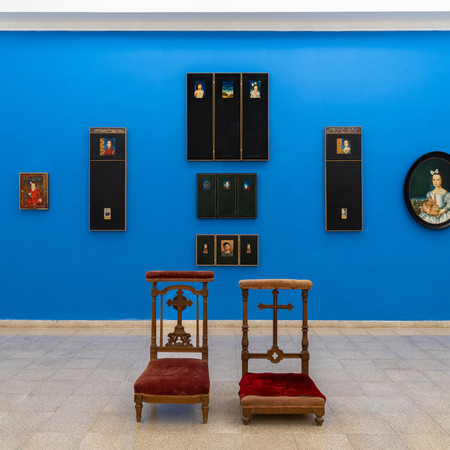top of page

Haya Graetz-Ran: Don’t Go Too Far - Works 1980–2022 | Mishkan Museum of Art, Ein Harod
This retrospective exhibition of works by Haya Graetz-Ran (b. 1948, Holon) spans four decades of artistic creation in the Israeli art field. Over the years, Graetz-Ran has created a range of works related to the pioneering Zionist worldview on which she was raised and educated, which link her oeuvre to the collective Israeli narrative. The exhibition offers a new look at her painting and the changes it has undergone over the years: from her watercolors, first exhibited in 1980; through the tempera paintings she developed in the latter half of the 1990s, which presented fascinating combinations of familiar Israeli figures, inspired by the great Western masters; her oil paintings of the early 2000s, which allowed for a technical and material deepening; to her ideological series from the 2000s onwards, which center on female Israeli pioneers, patrolling guards, and nurses.
Graetz-Ran’s painting revolves around the thematic backbone of two central figures: her mother (who is present in many of her works, either as a drawn character or as a poignant statement written or said to her as a child, with all the complexity of their relationship), and the pioneer Shoshana Bogin, to whom she dedicated an entire series and identifies with to the point of death. Her bond with the land of Israel took on special significance for her during her stay at the Cité internationale des arts in Paris (1999). Glimpsed through her landscapes of the Jezreel Valley are painful childhood memories of mute silence and victimization associated with the suffering of the founding generation of the kibbutzim. Female narratives that have been excluded from historiography gave rise to her series Levanot (White Girls), which deals with both the hegemonic male gaze and the biases of the early years of Israeli society’s formation. Her series Halutzot (Women Pioneers), Shomrot (Female Guards), and Achayot Belavan (Nurses in White) examine the foundering of the Zionist myth.
Graetz-Ran’s work also offers an exploration of photography, since most of her works are based on photographs painstakingly collected from archives and private albums from the early days of Zionist settlement in Israel’s pre-independence period. The characters are depicted repeatedly in several versions, in the artist’s bid to remove the scab from the wound and present perspectives that may yield new insights. Some paintings offer a “zoomed-in” view, while others crop the framing, in a play that allows her to engage the viewer in a dialogue and convey a variety of messages. Haya Graetz-Ran’s work articulates a spirited and sophisticated feminist narrative, dismantles constructions of masculinity, and offers a new critical reading of national and gender myths and symbols.



















bottom of page